Guest Blog by Dr. Ruchi Shree (TMBU, Bhagalpur-Bihar)
On the banks of river Ganga in north India, Bhagalpur is a district of South-east Bihar. This district is famous for production of silk and thus Bhagalpur is also called ‘silk city’. Due to its proximity to Ganga, it is a flood prone region of Bihar and the usual trend of flood is in alternate year with varying intensity. The wider impact of flood ranges from agricultural loss to disturbances in transportation (water on railway track to vanished roads and bridges) and health hazards to environmental impacts to name a few[i]. This essay has three objectives: first, to narrate the challenges and lessons from my first close encounter of flood, specifically Bhagalpur floods, second, to probe into major reasons of flood and third, to depict the post-flood scenario. To have seen myself in three roles namely flood observer, flood victim and flood survivor is what made me sense the everydayness of flood.
Contextualizing the Study:
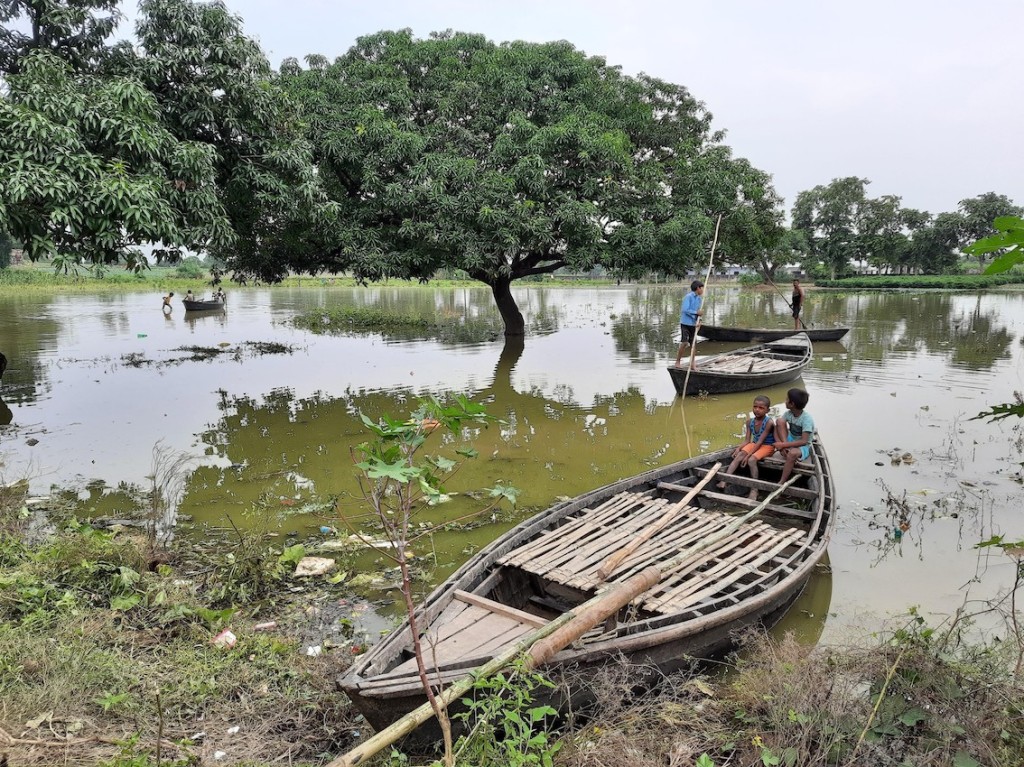
I live in Nathnagar area of Bhagalpur and teach in the University department of Political Science at Tilka Majhi University. Due to my interest in environmental issues in general and politics of water in particular, I have been researching and writing on the local problems[ii] in Bhagalpur. Dildarpur is a village (located in Ganga diyara[iii]) adjacent to university premise and faces flood almost every year. It was in the first week of August that I started observing the upcoming flood in this region. The university campus, its administrative wing as well as residential area have been constructed in low lying and flood prone zone of the city and face severe flood in alternate year. The local residents are quite used to flood and consider it a normal part of their life. However, the intensity of this year’s flood was higher than their expectations and for me it was much more frightening since it was my first experience the flood in Bihar.
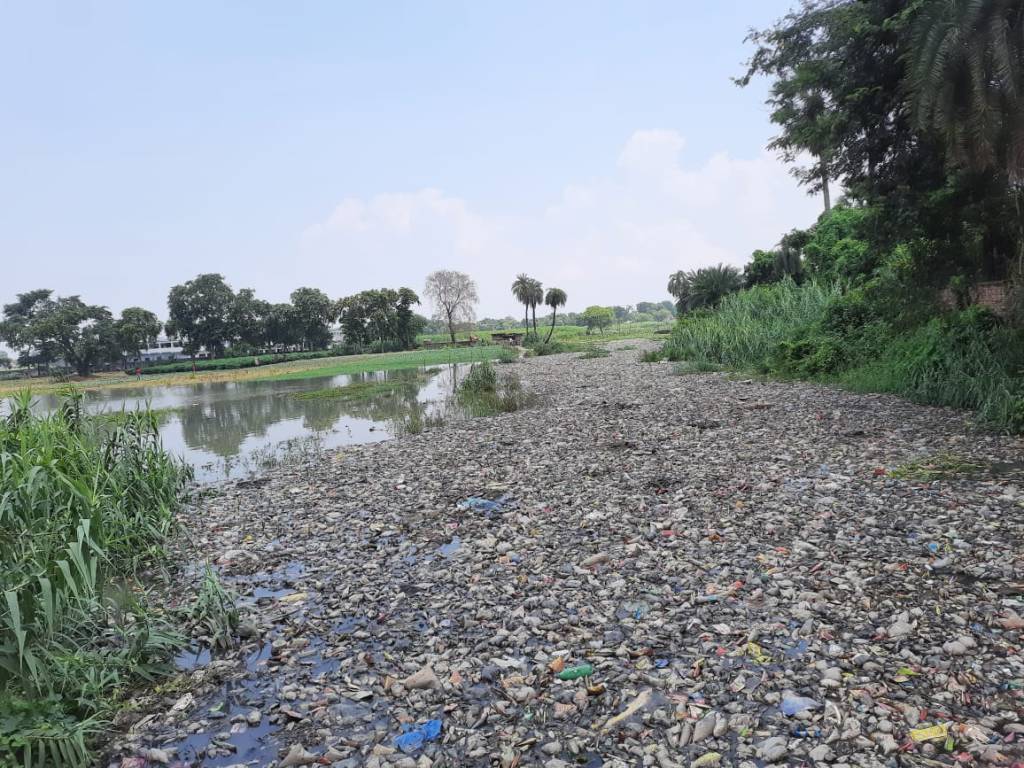
Why and How of the Flood:
As mentioned above, floods in Bihar are recurrent phenomena but this year’s flood in Patna and Bhagalpur[iv] was unprecedented. When I probed into the reasons of high level and frequent flood in Bhagalpur, the local residents mentioned following reasons: first, the proximity to River Ganga; second, numerous tributaries such as Son, Gandak, Saryu, Punpun, Falgu join the Ganga in and around Bhagalpur and thus increase the volume of Ganga during the rainy season; third, the “release”[v] of water from Nepal & other areas in the upstream and the impact of Farakka barrage downstream, and fourth, due to heavy siltation in rivers, the bed level of rivers has become high and their capacity to carry water has diminished over the years (this could be partly due to the backwater impact of Farakka barrage, among other reasons). The high level of water in Kosi river also leads to adding volumes to river Ganga.

When I first noticed the flood while cycling to the University for teaching, I saw four boats in flood water around 300 meters away from my residence. Within a week, the flood reached my colony and eventually a boat was hired for the residents. The movement inside as well as to move outside the colony became fully dependent on our access to boat. This dependence was sometimes a waiting period of thirty to forty minutes and numerous phone calls to the boatman. First day of going to workplace by boat seemed partly adventurous as I could not then foresee the upcoming challenges of experiencing the flood. However, to see the plight of people living on ground floor and the consequences of water inside their houses leading to evacuation was disheartening. In the hindsight, I was feeling little relieved as my flat was on the second floor. To my six years old daughter, the flood and boat were something she was in awe with and enjoying them to the fullest. My mind was contemplating the rationality, ambiguity and complexities of human nature.
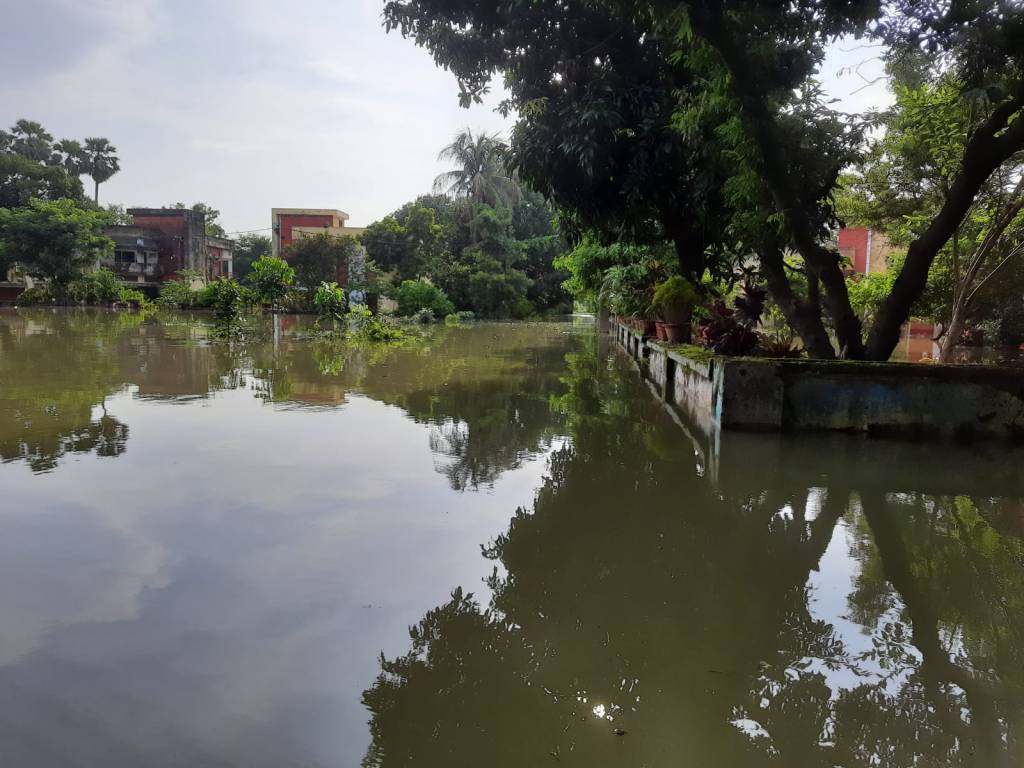
My intention of not to be afraid of flood was not sustainable anymore as we faced a series of problems gradually. To begin with a few of them: there is centralized motor connection for water supply in the Lalbag Professors’ Colony and once the flood water reached the pump station, it was not possible to switch on the motor. Some of the residents of ground floor shifted to rented accommodations outside with a pledge to leave the quarters. With no water supply to the tanks, some residents started moving to the University guest house. Another threat was the electricity connections to the houses to be interrupted any moment as per the trend in previous years’ flood in the colony. It was frightening to see the insects, frogs, worms and snakes in the flood water. The huge amount of plastic waste floating on the flood water and the stink was getting unbearable with every passing day. I also decided to move away from Bhagalpur and left for Patna for a week. Even in that I had to face the cancellation of the train I was to travel by due to water on the tracks and had to look for an alternative train on another route.
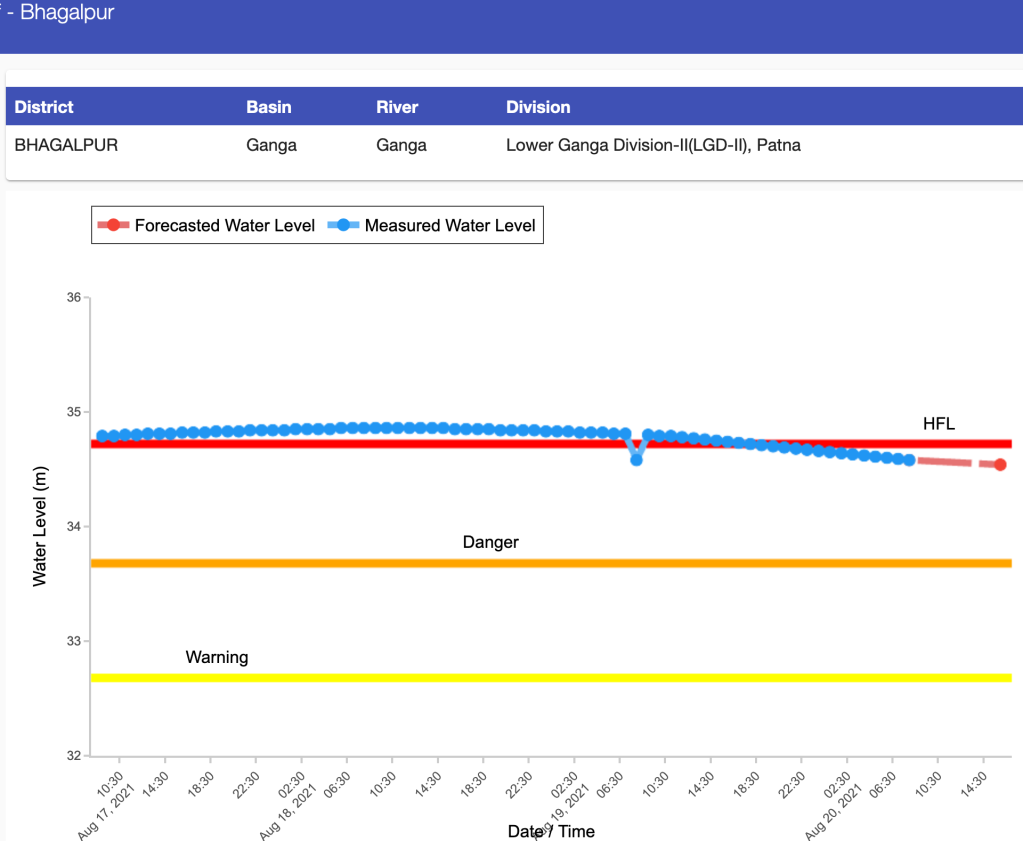
Remains of the Flood:
After a week, when I came back to Bhagalpur, the water level had receded significantly. Boat free movement was possible and water supply had started in the residential premises of the university. However, the water logging was there in certain areas and the people were gradually moving back to the colony. The quality of water supplied to households was poor and due to its bad smell we had to depend on bottled water for drinking. I was told that the bad smell of flood water in nearby areas of the building was to linger for a few weeks. Over and again, I was thinking it is one thing to do research on water and quite another to face the flood and the lessons that I learnt. The preparedness for flood has a lot to do with socio-economic, physical as well as mental/ psychological aspects. The unforeseen consequences of flood ranged from myself falling sick to compulsion of leaving my daughter with her grandparents due to difficult living conditions in Bhagalpur.
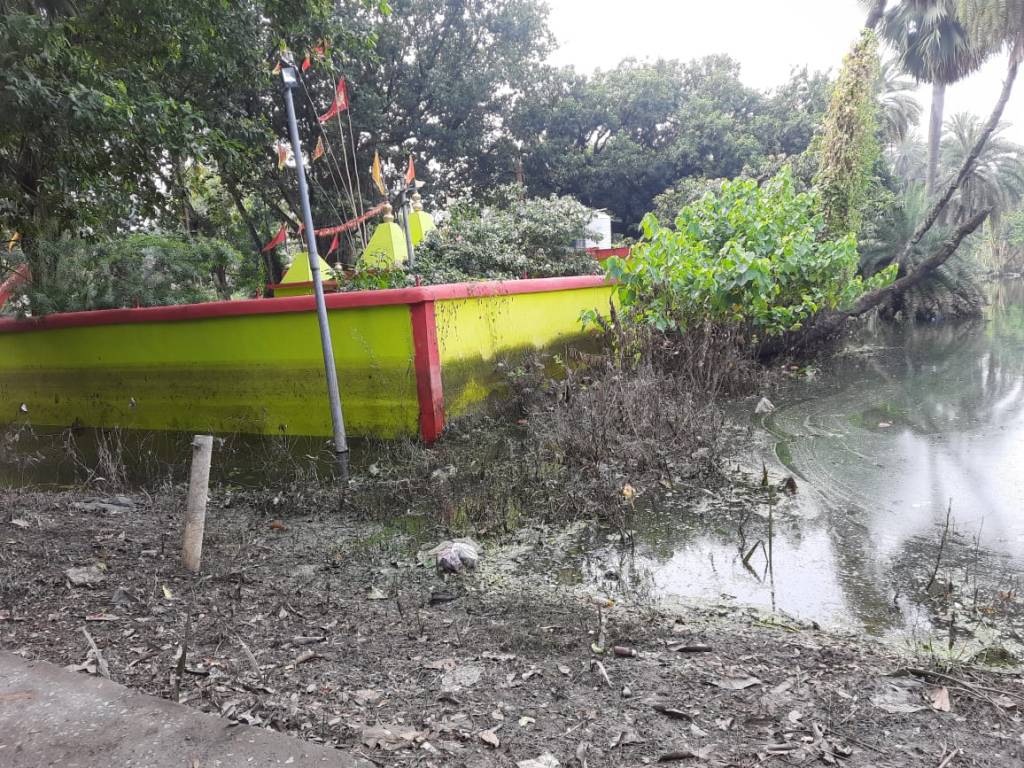
In the last two years, while teaching two courses titled Environmental Education and Environmental law and policies, I have learnt/realized three lessons. First, the rate of environmental degradation is so fast that we need to take up the cause on an urgent basis. Along with environmental education as a paper, the environmental awareness and concern should be part of our everyday life. We need to make changes in our lifestyle, e.g. minimum use of plastic by carrying cloth bags, re-use of waste water from R.O. machine, etc. to name a few. Second, the existing disjoint between environment and politics should aim at something like formation of a green party or to make environment a major political issue. The environmental laws need to be more effective since the rivers are dying and drying, air pollution has reached so high and health hazard seems to be looming large. Third, along with global warming and climate change, the regional environmental problems should be understood locally in order to find their decentralized connections, consequences, solutions and to ensure people’s participation.
To sum up, I would like to mention that flood as a natural and partly a manmade calamity does not differentiate much between the rich and the poor, as well as the rural and the urban. What I experienced was how the flood led to displacement and the day to day problems viz. drinking water, sanitation, transportation, health issues, etc. This experience made me empathize with a large population who face the flood every year. One may only hope for better flood preparedness strategies and the society and the state to work together to find long term ways of dealing with floods.
By Dr Ruchi Shree (jnuruchi@gmail.com)
NOTE: The feature image above is by Shri Kishan Kaljayee.
END NOTES:
[i] To learn more on floods in Bihar, one may read the writings of Anupam Mishra (Gandhi Peace Foundation, New Delhi) viz. Tairne wala samaj doob raha hai, Dinesh Mishra’s (Badh Mukti Abhiyaan, Jamshedpur) book Dui Patan ke beech me and Eklavya Prasad’s (Megh Pyne Abhiyaan, Bihar and Jharkhand) articles to name a few.
[ii] I am engaged in research on River Champa and wrote a three-part essay last year and recently a photo essay to highlight the complexities of politics of water. These guest blogs are available at https://sandrp.in/2020/04/05/how-did-champa-nadi-river-in-bhagalpur-bihar-become-nala-drain/
[iii] Diyara is a flood prone region adjacent to the river. The residents of the villages situated in such region are destined to shift to flood relief camps almost every year.
[iv] For details, please read Himanshu Thakkar’s article, https://sandrp.in/2021/08/14/why-are-patna-bhagalpur-facing-unprecedented-floods-on-indias-75th-independence-day/
[v] This is a bit of misconception as Nepal does not have anything to hold the flood waters of rivers flowing from Nepal to India. Only if you have the capacity to hold/ store water, would the question of release arise.
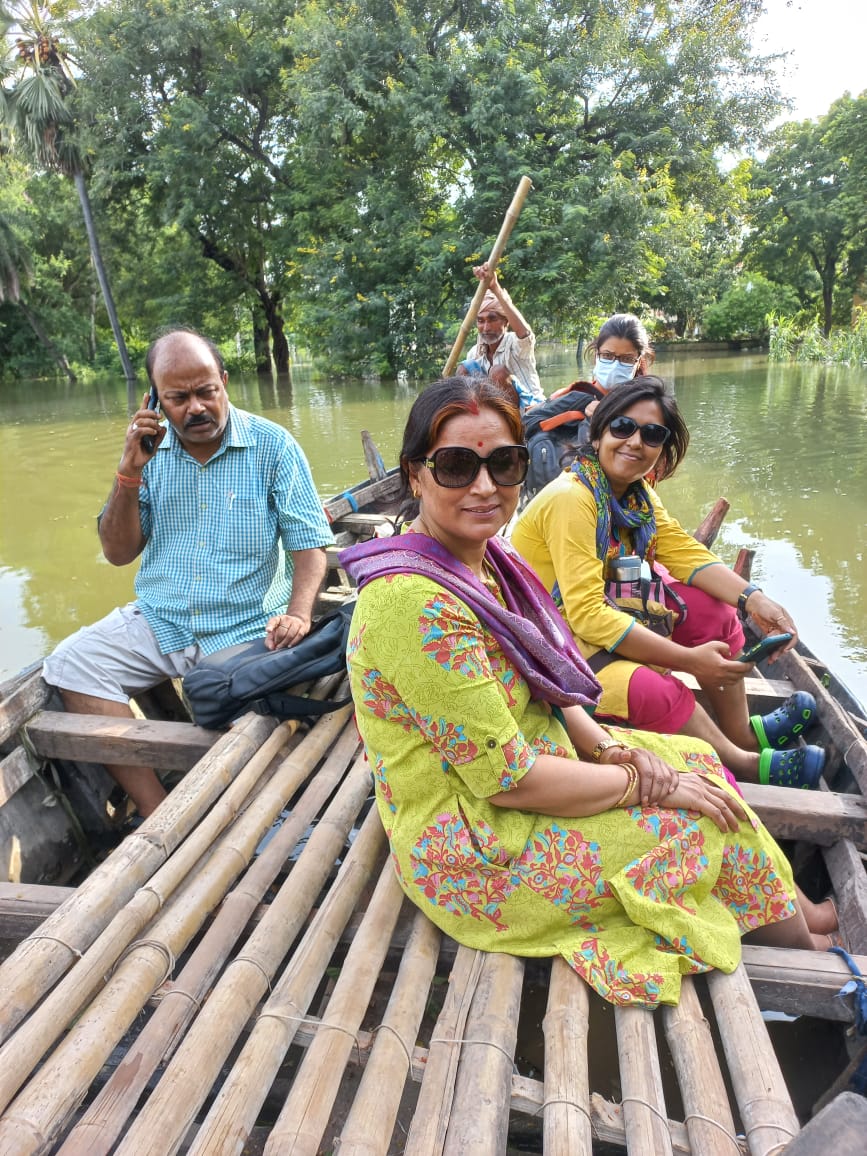
Beautifully explained the entire flood situation. Bihar faces Flood almost every alternate year & if not now, then when the Govt. will find a solution to the same.
LikeLiked by 1 person